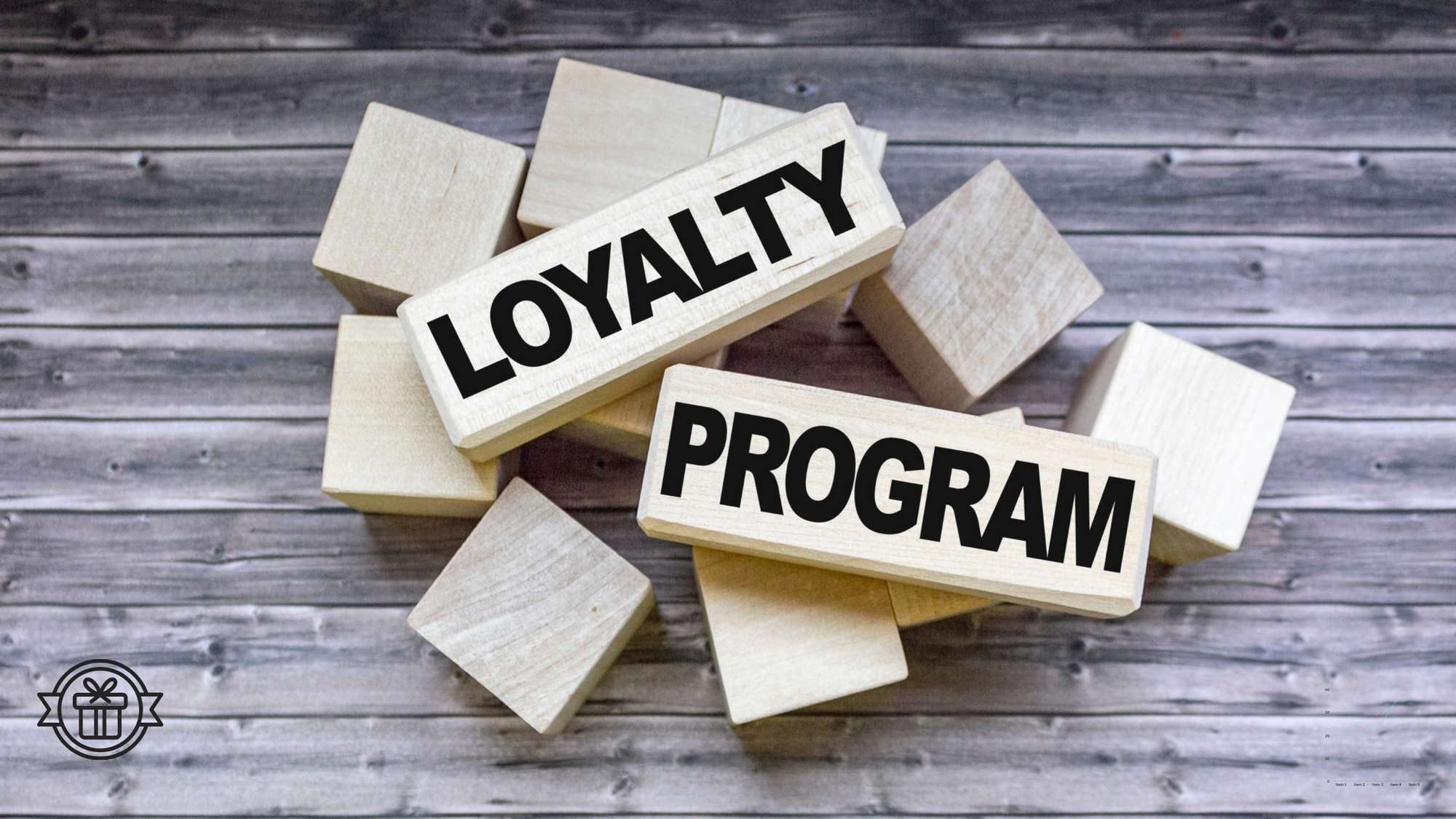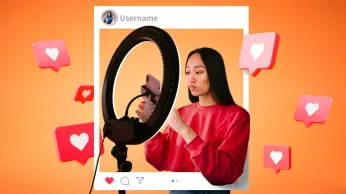How to Build a B2B Loyalty Program
Discover how to create a strategic B2B loyalty program that builds lasting client relationships, improves customer lifetime value, and increases brand loyalty. From reward ideas to overcoming common challenges, get actionable insights to drive results.
On this page
In an age where every business is vying for attention, customer loyalty is gold. While most of us are familiar with loyalty programs aimed at consumers – think frequent flyer miles or coffee shop stamp cards – there's another type of loyalty programs that's equally impactful yet often less discussed: Business-to-Business (B2B) loyalty programs.
In this article, we'll learn how a well-structured B2B loyalty program with the right rewards can be a game-changer in engaging your customers. By understanding the unique needs of B2B customers and offering rewards that genuinely add value, your business can foster strong relationships, drive repeat purchases, increase retention, and bolster your bottom line.
Let’s dive in!
What is a B2B loyalty program?
A B2B (Business-to-Business) loyalty program is a strategic initiative designed by businesses to encourage and reward other businesses for their continued patronage, partnership, or collaboration.
Unlike B2C (Business-to-Consumer) loyalty programs, which are targeted at individual consumers, B2B loyalty programs are aimed at other businesses, typically clients, partners, or distributors.
A B2B loyalty program is defined by its objectives. In a B2B context, a loyalty program is key to:
- Identifying a firm’s best customers
- Stimulating sales growth
- Increasing market share
- Building the switching costs
- Acting as a barrier to customers switching to competitors
Jim's book recognizes Nancy Flowers, a celebrated customer experience leader from a multinational insurance company, Hagerty, as a change maker. Hagerty boasts an 88% customer retention rate! Thanks to their emotional north star - happiness.
As a B2B2C company, Hagerty places great emphasis on keeping their agents and policyholders happy, a concept introduced by Nancy when designing their customer experience.
Nancy shares a story about Hagerty's roadside assistance program for classic car drivers. When the roadside assistance partners changed, customer satisfaction declined due to a lack of empathy from the new partners.
Realizing the importance of empathetic emotional experiences for drivers, Nancy and her team worked with the partners to restore previous customer satisfaction levels and increase revenue.
To create a superior customer experience, Nancy motivated her staff with client video feedback, showing "the good, the bad, and the ugly side of customer experience" in executive meetings.
Why are B2B loyalty programs important?
A curated B2B loyalty program can enhance customer experience by providing personalized and meaningful rewards, exclusive access to promotions and events, and expressing gratitude and recognition for the customer's loyalty.
This, in turn, leads to increased customer satisfaction, retention, and advocacy. When combined with change-makers efforts, B2B loyalty programs can ensure excellence in customer experience.
Here’s how:
1. Increases top-line sales via repeat business
While a positive customer experience is essential for encouraging repeat business, a well-designed loyalty program can take it to the next level.
2. Boosts a customer’s LTV (Lifetime Value)
B2B loyalty programs can increase customer LTV by incentivizing customers to make repeat purchases and rewarding them for loyalty.
3. Influences purchasing and selling behaviors
Understanding your customers' purchasing patterns allows you to promote specific products and services through your B2B loyalty program and influences their buying behavior too. The motivation to get the reward faster (time) and more often (frequency) incentivizes customers to spend more.
4. Reduces the overall cost of loyalty
B2B loyalty programs can reduce the overall cost of loyalty by:
- Encouraging repeat business and increasing customer retention through rewards and incentives
- Increasing the lifetime value of customers
- Reducing the cost of acquiring new customers that come through referrals from loyal clients
- Providing valuable data on customer behavior and preferences, allowing companies to tailor their marketing strategies for better ROI
5. Improves brand awareness and referral opportunities
In the B2B space, referrals play a significant role in driving business growth. A great customer experience can lead to positive word-of-mouth marketing, bringing in new customers and helping build brand awareness.
When a customer has an exceptional experience with a B2B company, it creates a story they are likely to share with their colleagues, peers, and industry networks. This helps build trust and credibility for the brand, increasing its visibility and creating new business opportunities.
Types of B2B loyalty programs
Depending on the type of your business and the goals you are aiming for, there are a variety of B2B loyalty programs you can opt for.
1. Perks program
A perks program is like an exclusive club for customers, with all benefits given upfront instead of gradually. While lucrative benefits encourage enrollment, purchase requirements ensure retention. Plus, a perks program is a proven revenue driver.
2. Tiered program
A tiered loyalty program rewards customers based on their spending levels, with increasing benefits as they move up tiers. Customers can be upgraded or downgraded based on their next order, while large deals result in direct placement on a higher tier.
With platforms like Loyalife, businesses can easily manage these dynamic tier movements, automate reward logic, and ensure each customer tier receives relevant, personalized benefits, all without added manual effort.
3. Points program
A point-based loyalty system (or earn and burn) is not driven by spending. Instead, customers get points for other tasks like taking surveys, training, referring your business to their acquaintances, etc. Upon task completion, they can redeem through discounts on future purchases, added benefits on existing services, upskilling benefits, etc.
4. Cashback program
Cashback programs offer direct financial benefits, returning a percentage of the purchase amount to customers in monetary or reward form. The value should be substantial yet profitable for the business.
5. Experiential programs
Experiential loyalty programs create emotional connections by offering unique experiences like special events, games, movie nights, adventure sports, etc. However, to be impactful, these programs must be well thought-out, relevant to the customer, and must go beyond monetary value.
B2B Loyalty programs: Challenges and solutions
Loyalty programs have long been a cornerstone of B2C marketing strategies, with companies enticing consumers with rewards, discounts, and other incentives to retain their business.
In B2B, though the concept is catching on, it comes with its unique challenges. Recognizing and addressing these challenges is essential for creating a successful B2B loyalty program. Let's delve into the most common challenges B2Bs face and their befitting solutions.
1. Failure to collect and analyze customer data
Problem: One of the most significant oversights in many B2B loyalty programs is the failure to gather meaningful customer data. Without this data, it's challenging to understand customer behavior, preferences, and needs.
Solution: Implement a robust CRM tool to capture, process, and analyze customer data. This will allow your business to segment customers, tailor offers based on their behavior, and predict future purchasing patterns.
2. Dilemma in deciding the right rewards
Problem: Knowing what rewards resonate with your B2B clients can be tricky. Unlike B2C, where preferences can be more generalized, B2B clients might have specific needs and preferences.
Solution: Implement a digital rewards platform that will automate this job for you. Instead of guessing the type of gifts your clients would like, send them a set of options to pick from. But make sure the rewards platform you choose integrates with your CRM, making the job easier.
3. Inability to deliver rewards across geographies
Problem: If your business has global clients, offering rewards can be a logistical nightmare. It's expensive and becomes burdensome.
Solution: Consider digital rewards, such as e-gift cards, which are universally accessible and don't require physical delivery. Partner with a digital rewards service provider that also solves the currency conversion issue.
4. Complicated redemption process
Problem: A cumbersome redemption process can deter your clients from using the loyalty program. Currency conversion issues further complicate this.
Solution: Streamline the redemption process with a user-friendly interface. For currency conversion, integrate real-time currency conversion tools or offer standardized rewards across currencies, like points-based systems.
5. Lack of insight into how your loyalty program is doing
Problem: Proper tracking makes it easier to know if your loyalty program is effective or if your clients are engaged.
Solution: Have a robust rewards platform with a tracking system that monitors real-time redemption status, engagement levels, and amount spent. This will give your business a clear picture of program performance and areas of improvement.
6. Lack of personalization makes the loyalty program less exciting
Problem: A generic loyalty program can get lost in the shuffle, failing to excite clients or reinforce brand identity.
Solution: White label suggests a two-pronged approach: personalizing the program for each client based on their preferences while ensuring the program's branding aligns with your company's identity. This creates a unique and memorable experience for your clients.
7. Issues with technology (high development cost) and integration (inability to link with existing CRMs)
Problem: Developing a loyalty program can be costly, and integrating it with existing systems can be technically challenging.
Solution: Instead of building from scratch, consider leveraging white-label reward platforms that can be customized for your needs. These platforms often have built-in integrations for popular CRMs, reducing the technical hurdles and costs.
How to create a B2B loyalty program
Building a B2B loyalty program is more than just offering discounts or rewards. It requires a strategic approach, clear objectives, and consistent efforts. Here's a step-by-step guide to help you create an impactful program.
1. Define clear and measurable goals
Before anything else, understand what you aim to achieve. Whether it's increasing repeat purchases, boosting customer retention rates, or enhancing brand loyalty, having clear and measurable objectives ensures that the program is aligned with your company's goals. These objectives will guide every subsequent decision in the program's development and execution.
Best Practice: Use the SMART criteria (Specific, Measurable, Achievable, Relevant, Time-bound) when setting your goals. This ensures they are clear, realistic, and can be tracked over a set period.
2. Decide your B2B rewards and incentives
The backbone of any loyalty program lies in its rewards. Consider what your B2B customers value the most. Is it exclusive discounts, loyalty points, digital gift cards, early access to new products, or invitations to VIP events? Ensure the rewards resonate with your clientele and are enticing enough to motivate desired behaviors.
Best Practice: Conduct surveys or interviews with key clients to understand what rewards would be most valuable to them. This ensures your incentives align with their needs and desires. Or give them a platform to choose what they want as rewards.
3. Define the terms & conditions of the program
Setting clear terms and conditions ensures transparency and trust. Outline how your clients can earn rewards, the redemption process, and any potential restrictions. By keeping it straightforward, you reduce confusion and enhance the overall user experience of the program.
Best Practice: Make your terms and conditions easily accessible, perhaps on your website or in promotional materials. This fosters transparency and trust with your B2B partners.
4. Personalize the campaign with the right messaging
Every business is unique, and so are its customers. Tailor your messaging to address your target audience's specific needs and preferences. Personalized campaigns, driven by data and insights, can significantly enhance engagement and make your customers feel valued.
Best Practice: Use segmentation strategies, dividing your client base into distinct categories based on factors like industry, size, or purchase behavior. Tailor your messaging to address the unique needs of each segment.
5. Measure the program's performance
Once your program is in place, continuous monitoring and evaluation are crucial. Track metrics like participation rates, customer feedback, and reward redemption patterns. This data will provide valuable insights into what's working and what might need tweaking. Remember, a successful loyalty program evolves with time and customer preferences.
Best Practice: Schedule regular reviews, perhaps quarterly, to evaluate the program's performance. This allows for timely adjustments based on real-time feedback and data.
B2B Loyalty programs strategies and best practices
B2B relationships are just as crucial, if not more so, than B2C relationships. With longer sales cycles, larger transaction values, and the significance of repeat business, as a B2B company, you need to establish strong bonds with your partners.
Loyalty programs can be the perfect vehicle for this. However, B2B loyalty program strategies differ from those for B2C. Let's explore some of the best practices and strategies to make your B2B loyalty program successful.
1. Create a buyer persona
- Why it matters: Understanding your customer is the cornerstone of any marketing strategy. In the context of B2B, this translates to understanding not just your clients but the key decision-makers within them.
- Best Practice: Develop a detailed buyer persona that includes demographics, job responsibilities, pain points, and goals. You can tailor your loyalty program to offer real value by understanding their challenges and needs.
2. Measure the crucial metrics
- Why it matters: With measurable outcomes, you will know if your loyalty program is succeeding or needs adjustment.
- Best Practice: Focus on metrics like customer retention rate, customer lifetime value (CLV), and Net Promoter Score (NPS) to gauge the effectiveness of your program. Regularly reviewing and acting on these metrics ensures the program's ongoing success.
3. Choose the right rewards
- Why it matters: The B2B loyalty rewards need to offer tangible value that aligns with your client's business needs.
- Best Practice: To grab customer attention, offer branded e-gift cards, virtual prepaid cards, or experiential gifts. The goal is to provide rewards that cater to the specific needs of B2B clients.
4. Personalize your messaging
- Why it matters: Generic messaging can appear insincere and may not resonate with your audience.
- Best Practice: Tailor your communication and use the data you've gathered about your clients. Personalized reward messages based on their purchase history, industry, or challenges can make your program more engaging and relevant.
5. Don't make it too salesy
- Why it matters: Your B2B clients seek genuine partnerships, not just transactional ones.
- Best Practice: Focus on building trust and offering value. Instead of constantly pushing for a sale, provide resources, insights, and support to help your clients succeed.
6. Give early access to new features and releases
- Why it matters: Exclusive access makes clients feel valued and offers them a competitive edge.
- Best Practice: Use your loyalty program as a platform to offer loyal clients a first look at new products, features, or services. This strengthens the bond and provides valuable feedback before a full-scale launch.
7. Align program goals with sales and marketing goals
- Why it matters: A disjointed strategy can dilute the effectiveness of your loyalty program.
- Best Practice: Ensure that your loyalty program goals, whether it's client retention, upselling, or gathering feedback, align with the broader goals of your sales and marketing teams. This creates a cohesive strategy that amplifies the impact of each component.
B2B Loyalty program reward ideas
The B2B loyalty rewards you choose should be based on the value and needs of your customers, your company's capabilities, and the perceived value of the reward to the customer. Always ensure that the rewards are meaningful and relevant to the customer's business and industry.
Here are a few B2B loyalty reward ideas to make a note of:
1. Long-term customers
These customers have been with your business for a significant period. Rewards should emphasize appreciation, exclusivity, and value-added services.
- Loyalty points: Let customers accumulate points for every purchase or milestone that can be redeemed for rewards or discounts.
- Decent discounts: Offer tiered discounts based on longevity—e.g., 5% off after 1 year, 10% after 3 years.
- VIP customer support: Provide priority access to dedicated support teams or 24/7 live assistance.
- Personalized business consultations: Offer tailored advice, audits, or strategic consultations aligned with their business needs.
- Exclusive Access to New Products/Services: Let them be the first to try or pilot new offerings.
2. High-volume purchasers
These customers frequently place large or recurring orders. Rewards should reinforce their value and encourage continued volume.
- Exclusive offers: Special deals on bulk buys or limited-time promotions reserved only for large-scale buyers.
- Branded e-gift cards: Send digital gift cards with your branding as thank-you gestures.
- Experiential gifts: Offer memorable experiences—like event tickets, wellness retreats, or business-class travel vouchers.
- Bulk purchase discounts: Offer scalable price cuts based on order size thresholds.
- Dedicated account manager: Assign a go-to person for all their needs—fostering trust and faster communication.
3. Referral customers
These are clients who bring in new business via word of mouth or formal referral programs.
- Referral bonuses via virtual prepaid cards: Reward with reloadable virtual cards that can be used anywhere.
- Special discounts for referred clients: Give both the referrer and the referred a win-win discount to encourage sign-ups.
- Recognition in company newsletters: Publicly appreciate their contribution to your growth.
- Exclusive events for referrers: Host VIP mixers, networking dinners, or appreciation webinars.
4. First-time customers
First impressions matter. Focus on creating a warm, value-packed welcome that promotes retention.
- Welcome discounts: Offer a limited-time introductory discount on their first purchase.
- Digital gift card: A small-value gift card helps add delight to the first transaction.
- Onboarding sessions/webinars: Personalized onboarding to get the most out of your services.
- Free trials of premium services: Give access to top-tier features to showcase your value.
- Branded merchandise: Send useful branded items like notebooks, water bottles, or tech accessories.
5. Feedback providers
Customers who share feedback are essential for improvement. Their time and insights deserve recognition.
- Exclusive discounts: Provide discount codes for customers who complete surveys or interviews.
- Coffee or meal vouchers: Gift vouchers for popular cafes or restaurants as a small token of appreciation.
- Feature their testimonials: Highlight their stories or quotes on your website or LinkedIn.
- Early access to beta features: Give them a sneak peek into upcoming tools or services.
- Invitation to feedback sessions: Make them part of an advisory circle or product council.
6. Contract-renewal customers
Encourage timely renewals and upsells through thoughtful incentives.
- Renewal discounts: Offer a % off on renewals, especially for multi-year contracts.
- E-gift card: A thank-you token for continuing the partnership.
- Complimentary service months: Add bonus months to their contract as part of renewal.
- Upgrade offers: Provide access to next-tier features or services at no extra cost.
- Appreciation events or webinars: Host special sessions or send personalized appreciation notes.
How Commercial Bank of Ceylon scaled loyalty-led growth with Loyalife
Commercial Bank of Ceylon PLC, the largest private sector bank in Sri Lanka, sought to enhance its customer loyalty initiatives to drive higher retention, operational efficiency, and revenue growth. Recognized among the Top 1000 Banks globally, the bank aimed to modernize its loyalty program to meet evolving customer expectations and maintain its competitive edge.
Challenges faced
The bank encountered several obstacles in its existing loyalty framework:
- Low customer retention: The absence of personalized and timely rewards diminished the program's relevance, leading to decreased customer engagement.
- Manual and inefficient reward tracking: Fragmented processes resulted in delays, errors, and increased administrative overhead.
- Limited customer insights: Inadequate data analytics hindered the ability to segment customers effectively and deliver meaningful offers.
- Operational complexity and higher costs: A heavy reliance on manual tasks escalated operational efforts and expenses, restricting the program's scalability and agility.
Solution implemented
To address these challenges, Commercial Bank of Ceylon PLC implemented Loyalife's loyalty management platform, launching the "Max Loyalty Rewards" program. Key features and integrations included:
- Seamless integration: API-driven connectivity ensured synchronization with existing CRM and banking platforms, facilitating real-time updates and smooth customer experiences.
- Program customization and scalability: The adaptive design allowed for personalized rewards and the flexibility to expand the loyalty ecosystem in line with evolving customer needs and business priorities.
- Real-time redemption platform: A mobile-first, intuitive portal empowered customers to redeem rewards instantly, enhancing satisfaction and reducing friction.
- Advanced analytics and insights: Robust data capabilities provided deeper visibility into redemption trends and customer behavior, enabling the creation of more targeted campaigns.
- Automated loyalty operations: Intelligent automation replaced manual processes, improving accuracy, reducing operational costs, and allowing teams to focus on strategic initiatives.
- Intuitive User Interface: A user-friendly interface ensured ease of use for both customers and bank staff, promoting higher engagement levels.
Results
The implementation of Loyalife's platform yielded significant benefits:
- Enhanced customer retention: Personalized and timely rewards increased program relevance, fostering stronger customer relationships.
- Operational efficiency: Automation and seamless integrations reduced manual workloads, minimized errors, and lowered operational costs.
- Improved customer insights: Advanced analytics facilitated better customer segmentation and more effective marketing campaigns.
- Scalability: The flexible platform accommodated growth and adaptation to changing customer preferences and market dynamics.
Conclusion
A well-structured B2B loyalty program with the right rewards can be a game-changer in customer engagement. By understanding the unique needs of B2B customers and offering rewards that genuinely add value, businesses can foster deeper relationships, drive repeat purchases, and bolster their bottom line.
In the end, it's not just about offering rewards; it's about demonstrating a commitment to the customer's success. And when businesses get it right, the results can be transformative.
To help you get it right, Loyalife offers a purpose-built solution designed for the B2B ecosystem.
With Loyalife, you can create high-impact loyalty programs that align perfectly with the way your business operates and your customers engage. Whether you’re encouraging repeat orders, rewarding contract renewals, or recognizing top referrers, Loyalife’s platform is built to deliver measurable value at every stage of the customer journey.
Here’s why businesses choose Loyalife:
- Reward what matters most – From large-volume purchases to timely referrals, recognize every meaningful action with customizable rewards.
- Tailored to B2B workflows – Easily segment customers by industry, order volume, or engagement type, and offer rewards that truly resonate.
- Personalize the experience – Segment customers and craft reward journeys based on their lifecycle stage, purchase behavior, and engagement history.
- Automate and scale – Easily manage reward campaigns with intuitive automation tools, reducing manual effort and enabling your team to focus on strategy.
- Gain actionable insights – Track program performance with real-time analytics and understand what drives loyalty among your most valuable clients.
- Integrate seamlessly – Loyalife integrates with your CRM, marketing automation, and invoicing systems to keep data flowing smoothly across platforms.
Schedule a free demo and start building smarter B2B relationships today.









